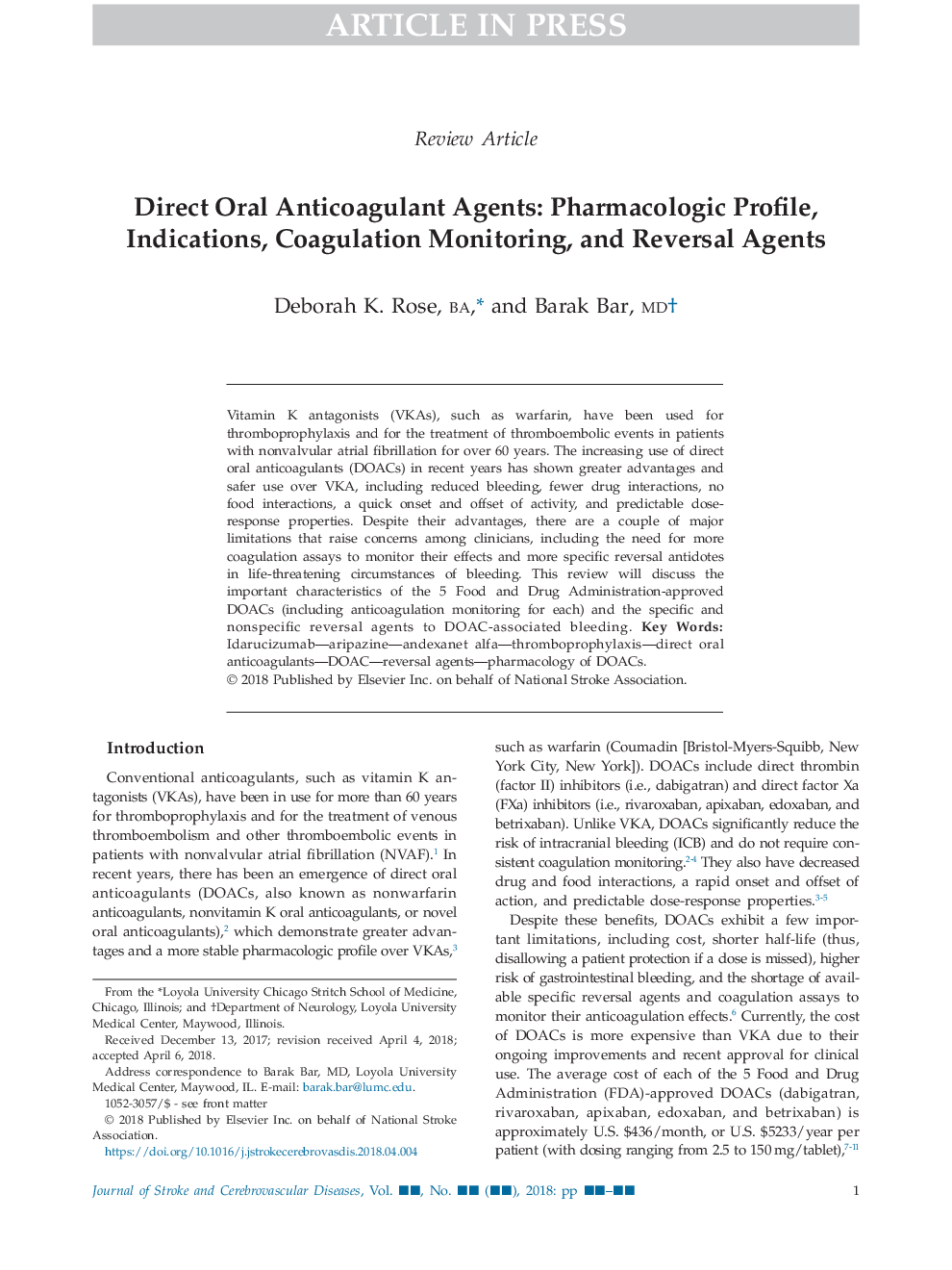| Article ID | Journal | Published Year | Pages | File Type |
|---|---|---|---|---|
| 8594292 | Journal of Stroke and Cerebrovascular Diseases | 2018 | 10 Pages |
Abstract
Vitamin K antagonists (VKAs), such as warfarin, have been used for thromboprophylaxis and for the treatment of thromboembolic events in patients with nonvalvular atrial fibrillation for over 60 years. The increasing use of direct oral anticoagulants (DOACs) in recent years has shown greater advantages and safer use over VKA, including reduced bleeding, fewer drug interactions, no food interactions, a quick onset and offset of activity, and predictable dose-response properties. Despite their advantages, there are a couple of major limitations that raise concerns among clinicians, including the need for more coagulation assays to monitor their effects and more specific reversal antidotes in life-threatening circumstances of bleeding. This review will discuss the important characteristics of the 5 Food and Drug Administration-approved DOACs (including anticoagulation monitoring for each) and the specific and nonspecific reversal agents to DOAC-associated bleeding.
Related Topics
Health Sciences
Medicine and Dentistry
Clinical Neurology
Authors
Deborah K. BA, Barak MD,
